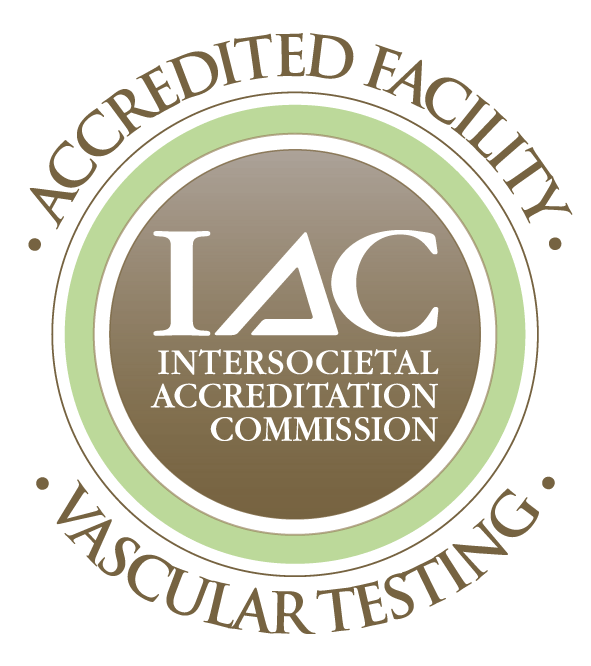Critical Limb Ischemia
What is Critical Limb Ischemia?
Ischemia is a serious condition in which there is inadequate blood flow and oxygen to a specific part of the body. It can occur anywhere blood flows including the limbs, heart, brain or intestines. It is generally caused by a narrowing or blockage of an artery. Ischemia is a severe condition that can cause tissue damage and loss of limbs. This condition will not improve on its own and requires appropriate medical attention.
How Does it Occur?
Ischemia can ocur in any muscle group, organ, or tissue in the body. For example, in the lower extremities, ischemia can cause claudication in peripheral artery disease (PAD) or may cause critical limb ischemia (CLI) in severe cases. In the heart, ischemia is caused by coronary artery disease (CAD) and can cause angina or a heart attack; in the brain, ischemia may cause stroke or transient ischemic attacks (TIAs) and; in the intestines it is known as mesenteric ischemia and can cause severe abdominal pain.
What Are the Symptoms of Ischemia?
The symptoms of ischemia depend upon how quickly the blood flow is interrupted and where it occurs. In the limbs, early symptoms of ischemia may include claudication (pain, burning or cramping in the muscles with exercise that goes away with rest). this can progress over time to CLI, the reduction of blood flow to the affected extremity that results in severe pain or tissue loss. The pain is known as “rest pain” because it happens when resting or asleep. Usually, it wakes an individual up at night and can be relieved temporarily by hanging the leg over the bed or getting up to walk around. If the tissue of the limb has been affected, a non-healing sore or even gangrene may occur and the skin turns black; this requires immediate attention.
Sudden onset of leg ischemia may cause severe pain, loss of pulses, coldness of the limb, paleness of the skin, and even leg weakness and loss of sensation. It also requires immediate medical attention.
In the heart, ischemia may cause angina (chest pain with exertion that goes away with rest) or even a heart attack which requires immediate medical attention.In the brain, ischemia can cause a stroke and also requires immediate medical attention. In the intestines, if the blockage of the arteries supplying the intestines happens slowly, it results in chronic ischemia, which may cause abdominal pain after eating causing fear of food and unintended weight loss. In its acute sudden form, intestinal ischemia may cause bowel gangrene causing a sudden onset of severe abdominal pain that requires immediate medical attention.
Risk Factors of Ischemia
The risk factors are those for atherosclerosis (plaque buildup in the arteries): smoking, advanced age, high cholesterol, high blood pressure, diabetes, a family history of cardiovascular disease, sedentary lifestyle and obesity.
How Ischemia is Diagnosed
Diagnosis of ischemia depends on its location. Symptoms are the first clue, and your health care provider will ask you for detailed information on when and where the pain occurs, how often and what relieves or exacerbates it. If the ischemia is in the lower extremities, you may be sent to a non-invasive vascular laboratory to have an ankle brachial index test (ABI), which test the blood pressures in the legs. Depending upon those findings, you may be sent for a Duplex ultrasound imaging of the arteries or magnetic resonance arteriography (MRA) or computed tomography (CT). In some cases, particularly with critical limb ischemia, you may be sent for an arteriogram, which is an x-ray of the arteries while dye is injected into the blood vessels. To diagnose a stroke, a picture of the brain with a head CT scan or a brain MRI is taken. Duplex ultrasound imaging, MRA, CT, or an arteriogram can also be used to assess or diagnose disease in the carotid arteries in the neck leading up to the brain. If heart ischemia is suspected you may receive a stress test. In several cases you may be sent for coronary angiography. For mesenteric ischemia, imaging of the three vessels supplying the intestines is performed with ultrasound, CT or MRA, followed by arteriography if necessary.
How Ischemia is Treated
Treatment of ischemia depends upon the location of the ischemia and its severity. However, for all forms of ischemia, controlling risk factors, especially smoking cessation, is essential! It may prevent progression of the ischemia and save your limb or your life. Treatment is focused upon getting more blood supply to the area of ischemia. This may be accomplished several ways:
- Medications: Several medications may be prescribed to prevent further progressions of the disease and to reduce the effect of contributing factors such as high blood pressure and cholesterol. Medications that fight infections, and pain medications may also be prescribed in certain cases.
- Exercise: If one experiences claudication in the legs or angina in the heart, a supervised exercise routine may be prescribed. Regular exercise may also result in other benefits such as weight loss, lower blood pressure, lower cholesterol, and better control of diabetes.
- Surgery or Endovascular Procedures: In many cases, an endovascular procedure may be performed within the artery using clot-busting drugs to dissolve clots (thrombolysis), a balloon to widen the artery (angioplasty), and/or a wire reinforced stent which remains inside the artery serving as a scaffolding to keep it open. In some cases, a bypass of the affected artery may be performed. Either a segment of leg vein or an artificial tube is attached surgically above and below the blockage to detour blood ow around the blocked area allowing the blood to reach the area of ischemia beyond the blockage. Examples of bypass procedures are leg artery bypass or coronary artery bypass grafting (also known as CABG or “open heart” surgery). Severe blockages in the carotid arteries that lead to ischemia may be treated with a surgical procedure known as carotid endarterectomy in which severe plaque is removed from the artery.
Other Treatments
Arterial Disease
Carotid Artery Disease
Chronic Venous Hypertension
Claudication
Critical Limb Ischemia
Deep Venous Thrombosis
Dialysis
Nonhealing Wounds
Peripheral Aneurysms
Peripheral Artery Disease
Pulmonary Embolus
Stroke
Subclavian Steal Syndrome
Subclavian Stenosis
Transient Ischemic Attacks
Varicose Veins
Venous Insufficiency
Venous Stasis Ulcers
Meet Our Doctors
Questions?
All Rights Reserved | Vascular Care of Texas, PLLC | Privacy Policy






